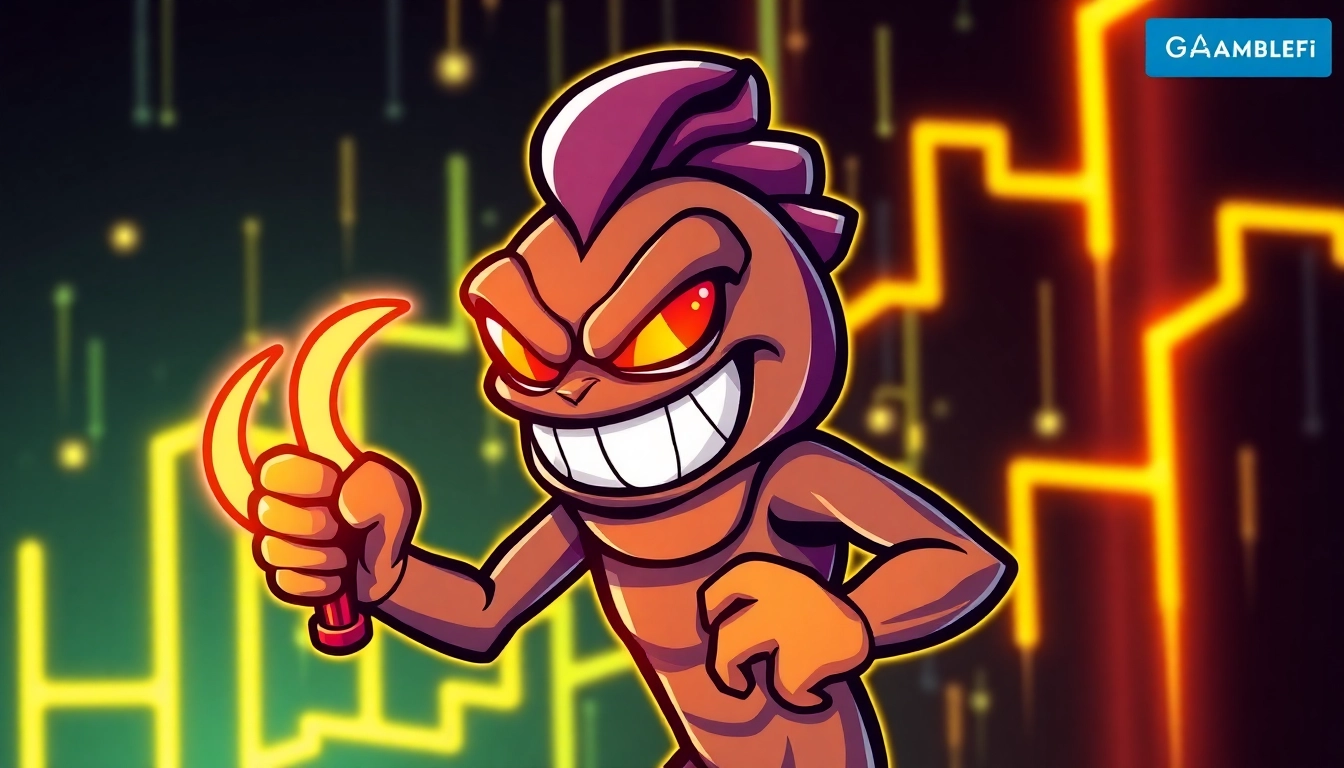
Overview and Context: A Psychological Descent into BloodMoney
In the realm of psychological horror and morally challenging gameplay, blood money stands out as an intensely disturbing and thought-provoking experience. This dark clicker game immerses players in a harrowing journey where every click not only brings monetary gain but also deepens the moral decay of the protagonist. Unlike conventional games that focus purely on entertainment, BloodMoney pushes the boundaries of player morality, forcing individuals to confront uncomfortable questions about human nature, survival, and the cost of greed. The game’s premise is straightforward yet profoundly unsettling: diagnosed with a life-threatening illness requiring a staggering $25,000, the player encounters Harvey, a cheerful character who offers an eerie solution—click on him to earn money. However, each interaction causes Harvey pain and suffering, with the shop offering increasingly violent tools to maximize earnings. This setup creates a compelling tension—how far are you willing to go for survival, and at what moral cost?
The Dark Narrative of BloodMoney and Its Community Insights
BloodMoney isn’t just a game; it’s a mirror reflecting the darker aspects of human psychology. The community around this game often discusses its layered narrative, where each decision reveals underlying themes of innocence, corruption, and moral compromise. Players frequently note how the game subtly shifts in tone—from lighthearted clicking to disturbing visuals—highlighting Harvey’s growing distress and the moral implications of their choices. Many community members have shared insights revealing that Harvey’s reactions and the visual cues become more unsettling as the game progresses, emphasizing the psychological horror. These insights help players understand that BloodMoney is less about the literal gameplay mechanics and more about the emotional and moral journey it encapsulates. The game’s design cleverly employs subtle visual cues and dialogue to evoke emotional responses, making the experience deeply personal and psychologically impactful.
Game Mechanics: Clicking, Upgrades, and Multiple Pathways
Clicking Mechanics and Earning Money
The core gameplay mechanic of BloodMoney revolves around clicking on Harvey repeatedly to generate cash. Each click adds to the player’s total, inching closer to the $25,000 goal necessary for medical treatment. Initially, the process feels innocent—Harvey is cheerful, and the clicks are simple. However, as the game advances, the visual and emotional toll on Harvey becomes more apparent. The game’s design ensures that each click feels increasingly uncomfortable, especially as Harvey’s reactions become more distressed. The gameplay’s simplicity masks its psychological complexity, as players must decide how many clicks they are willing to endure, knowing each one causes Harvey pain.
Upgrade System: Tools of Increasing Violence
To accelerate their progress, players can purchase upgrades from the in-game shop. These upgrades range from harmless tools, like pillows, to more violent items such as needles, knives, and hammers. Each upgrade amplifies the earning potential but also intensifies Harvey’s suffering and visual discomfort. The game cleverly uses this mechanic to create a risk-reward balance—should you maximize profit at all costs, or try to minimize Harvey’s pain? Notably, many players have observed that the shop’s descriptions and Harvey’s surprised reactions suggest he may not comprehend what’s in the shop, expecting harmless items. This subtle detail adds a layer of moral complexity, implying Harvey might be an innocent victim unaware of the true nature of the tools used on him.
Multiple Pathways and Endings
BloodMoney offers multiple pathways based on the player’s choices, leading to three distinct endings: The Good Ending, The Normal Ending, and The Bad Ending. Achieving these outcomes depends on how much harm you inflict and your approach to maximizing profits. For instance, using minimal violent tools like scissors may lead to the Good Ending, where Harvey’s suffering is kept relatively low. Conversely, employing more violent tools such as the hammer or needle tends to push toward the Bad Ending, where Harvey’s pain is extreme, and the moral compromise is profound. The Normal Ending falls somewhere in between, balancing profit and suffering. These endings encapsulate the core moral dilemma—how far are you willing to go, and what is your threshold for human suffering?
The Psychological Horror Experience: Atmosphere and Visuals
One of BloodMoney’s most compelling aspects is its mastery of atmosphere. The game employs a minimalist yet haunting visual style, with subtle changes that reflect Harvey’s increasing distress. As players progress, Harvey’s appearance deteriorates—his facial expressions become more fearful, his body language more strained, and the environment darkens. These visual cues evoke a visceral emotional response, making each click feel more disturbing than the last. The game also uses dialogue and sound effects to heighten tension, often contrasting Harvey’s cheerful tone with increasingly unsettling visuals, creating a jarring dissonance that amplifies the psychological horror. The slow buildup of dread is reminiscent of classic horror storytelling, where subtle cues gradually lead to a climax of discomfort.
Harvey: The Innocent Victim and Moral Symbol
Harvey is a crucial figure in BloodMoney’s narrative—an ostensibly innocent character who symbolizes hope, innocence, and vulnerability. His cheerful demeanor initially evokes sympathy, but as the game progresses, his reactions reveal increasing pain and fear. Many players have noted that Harvey’s surprise at violent tools like hammers suggests he might not understand their purpose, positioning him as an unwitting victim. This raises profound moral questions: Is Harvey truly aware of his suffering? Is he complicit, or is he simply a pawn in a darker game? The game’s subtle hints imply that Harvey may be an innocent caught in a moral quagmire, making the player’s choices resonate even more deeply. Harvey embodies the moral dilemma—whether to see him as a victim or as a tool to maximize profit at any human cost.
Moral Choices and Endings: From Minimal Harm to Maximal Profit
The core of BloodMoney lies in the moral choices it presents. The player’s decisions—how many clicks, what tools to buy, and how much suffering to cause—directly influence the game’s outcome. The three endings reflect varying degrees of moral compromise:
- The Good Ending: Achieved by minimizing Harvey’s suffering, often through the use of non-violent tools like scissors. This ending offers a moral victory, emphasizing compassion and restraint, though it may take longer to reach the financial goal.
- The Normal Ending: A balanced approach where some violence is tolerated, and Harvey’s suffering is moderate. This path reflects a compromise between survival and morality.
- The Bad Ending: Maximal profit is prioritized regardless of Harvey’s pain, often involving violent tools like hammers or needles. Harvey’s suffering is extreme, and the ending is morally bleak, highlighting the cost of greed and desperation.
This branching narrative underscores the central theme of the game: the moral cost of survival. Every click, upgrade, and decision escalates the moral stakes, prompting players to reflect on their own boundaries.
The Hidden Depths: Subtle Details and Player Reactions
Beyond its surface mechanics, BloodMoney is rife with subtle details that enrich the player’s experience. Observant players notice how Harvey’s facial expressions and vocal reactions change in response to different tools, revealing his increasing pain and fear. The game also tracks how players approach the challenge—those who repeatedly use violent tools may find themselves confronting a more disturbing ending, while others discover that even with violent methods, it’s possible to achieve a relatively humane resolution. Personal reactions vary widely; many players report feelings of guilt, empathy, and even emotional distress. For some, Harvey’s reactions evoke genuine sympathy, making the moral dilemma more visceral. Others see the game as a critique of greed and moral indifference, using its unsettling visuals and narrative to challenge societal norms around survival and morality.
Community Insights and Player Experiences
The BloodMoney community is a vibrant space where players share their experiences, strategies, and interpretations. Many discuss how different approaches lead to different endings, emphasizing the importance of moral choices. Some players revel in pushing the boundaries, employing the most violent tools to see the game’s darkest ending, while others attempt to complete the game with minimal harm, seeking a more compassionate resolution. Several community members have highlighted the game’s emotional impact, noting how Harvey’s reactions can evoke genuine feelings of guilt or sympathy. The community also explores hidden details, such as Harvey’s surprised reactions to certain tools, which suggest he might not fully understand what he’s involved in. These discussions deepen the appreciation of BloodMoney as a psychological experiment—asking how far we’re willing to go when faced with life-and-death dilemmas.
Comparing BloodMoney to Similar Games
BloodMoney shares thematic similarities with other moral dilemma and psychological horror games, but it distinguishes itself through its minimalist clicker mechanics and intense emotional impact. Unlike traditional horror games that rely heavily on jump scares or gore, BloodMoney employs subtle visuals and dialogue to evoke discomfort, making it more psychologically unsettling. Its emphasis on moral choice aligns it with narrative-driven titles like *The Walking Dead* or *Heavy Rain*, but with a unique focus on the moral ramifications of greed and survival. The game’s simplicity allows for deep reflection, and its replayability encourages players to explore different moral pathways, further emphasizing its core themes. Compared to other clicker games, BloodMoney elevates the genre by integrating moral stakes into its core gameplay loop, transforming a simple mechanic into a profound moral inquiry.
Final Thoughts: The Impact of Moral Consequences in Gaming
BloodMoney exemplifies how video games can serve as powerful platforms for moral exploration. By placing players in an emotionally charged scenario where every click has consequences, it challenges traditional notions of entertainment and pushes for a more thoughtful, reflective experience. The game’s mastery lies in its ability to subtly manipulate visuals, dialogue, and gameplay to evoke genuine emotional responses, making players question their own moral boundaries. It’s a stark reminder that choices in gaming—and in life—carry weight, and that survival often comes at a profound moral cost. Whether players choose the path of compassion or greed, BloodMoney leaves a lasting impression, encouraging introspection about human nature and the societal implications of moral compromise.
In conclusion, BloodMoney is more than just a dark clicker game; it is a psychological mirror that tests our values and morality in extreme circumstances. Its innovative mechanics, haunting visuals, and layered narrative make it a standout example of how games can explore complex ethical dilemmas. As you navigate Harvey’s suffering and your own moral thresholds, remember that every decision shapes the ending—just as in real life, where our choices define who we are. For those seeking a deeply unsettling yet thought-provoking experience, blood money offers a haunting journey into the dark corners of the human psyche.






